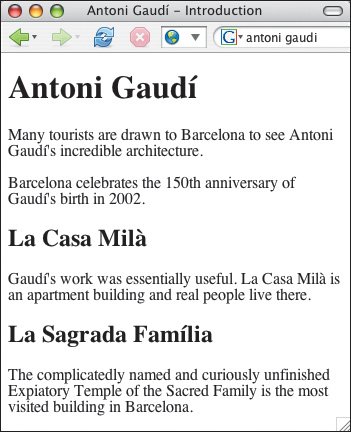Starting a New Paragraph
| (X)HTML does not recognize the returns or other extra white space that you enter in your text editor (see page 32). To start a new paragraph in your Web page, you use the p tag. Figure 3.12. Enclose each paragraph in opening and closing p tags. If you don't close them (which is perfectly legal in HTML but not XHTML), styles won't be applied properly. To begin a new paragraph:
Figure 3.13. The amount of space between each paragraph is proportional to the size of the text.
|
EAN: 2147483647
Pages: 340


 Tips
Tips